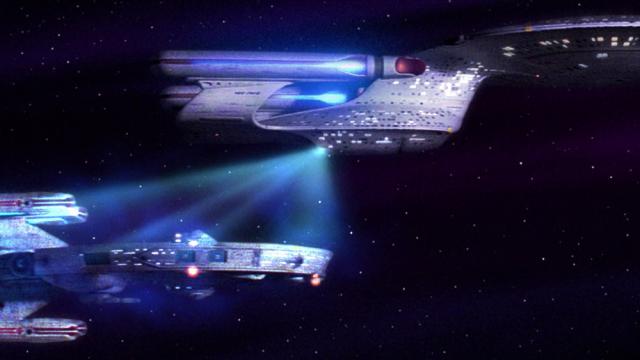When Arx Pax unveiled its “hoverboard” last year, we had a hunch that this was but the first demonstration of the company’s new magnetic field technology. Why was Arx Pax really messing around with magnets? For one, to build a tractor beam.
That’s right: Today, Arx Pax is announcing a new partnership with NASA, which wants to use hover engine technology to capture and manipulate micro-satellites. In other words, NASA and Arx Pax are going to try to create a magnetic tractor beam. A small one.
“NASA realised that this is a fundamental tool,” Arx Pax founder and CFO Greg Henderson told Gizmodo over the phone. “What we’re providing NASA is a way of manipulating objects in space without touching them.”
But let’s back up a quick sec. For those who don’t remember, Arx Pax made its debut with the unveiling of the Hendo Hoverboard in 2014. That device — yes, it can indeed hover off the ground — was the first application of the company’s patent-pending Magnetic Field Architecture (MFA) technology.
The principle behind the board is simple: A ‘hover engine’ generates swirls of electricity in a conductive surface to produce a concentrated magnetic field. That magnetic field induces an opposing field in a conductive material below — and voila, liftoff. (It’s really not that easy, companies have been trying and failing to do this for years.)
The Hendo Hoverboard was on some levels a success, but it was no Back to the Future. The thing only worked on a special metallic surface, it made loud, screechy noises, and its battery life was pretty bad. But it was clear that the device was really just a proof-of-concept, and that Arx Pax had bigger plans in mind for MFA — for instance, levitating houses to protect them from earthquake damage, or using magnetic fields to attract satellites to one another.

A CubeSat built at NASA’s Ames Research Center. Image Credit: NASA Ames
In a statement issued today, Arx Pax says it will be working with NASA “to design a device with the ability to attract one object to another from a distance.” At this stage, the focus will be on linking up CubeSats — those lightweight, 10cm by 10 cm satellites that NASA and other researchers are using to monitor the Earth, and that we may eventually deploy to explore distant worlds.
“CubeSats are in close proximity already,” Henderson says. “We’re trying to figure out how do you link them together, connect them, and move them around relative to one another.”
Whether we’re studying our planet’s climate or exploring the surface of an asteroid, there are obvious benefits to a coordinated team of satellites. But we shouldn’t get too excited just yet, because details of the project are very sparse — we don’t, for instance, know how Arx Pax and NASA are hoping to power said “tractor beam”, or what sorts of ranges we might be able to achieve. Still, it seems like a worthy project, and hey, if we ever hope to build epic, tractor-beam wielding, galaxy-trotting spaceships, we’ve gotta start somewhere.
